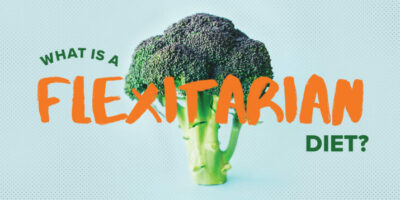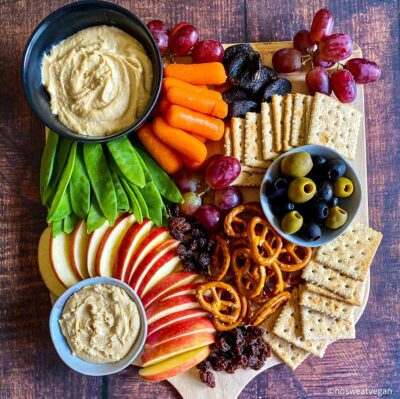All over the world, people are changing their diets to help protect the planet, animals, and their health. Vegans eat no animal products at all; vegetarians eat no meat but will have eggs and dairy; but what about flexitarians?
What Is a Flexitarian?
A flexitarian is someone who predominantly eats a plant-based diet but may have fish, meat, dairy, or eggs occasionally.
What Is a Flexitarian Diet?
A flexitarian diet consists largely of plant-based foods chosen from the wealth of fruits and vegetables, nuts, seeds, grains, herbs, salads, and all the dedicated meat-free and dairy-free products such as sausages, oat milk, soya yoghurts, and more. However, a flexitarian diet is not 100% plant-based, as flexitarians eat animal products occasionally.
What Are Flexitarian Health Benefits?
All processed meats cause cancer, and all red meats are “probably carcinogenic” too, so when we cut down on those foods, we reduce the risks of some cancers. Plus, animal products tend to contain higher levels of saturated fats, while only animal products contain cholesterol. When we prioritise healthy plant-based foods, there are many positive health benefits.
Heart Disease
A 2022 scientific review of the evidence on plant-based diets and heart disease concluded: “The advantages of a whole food plant-based diet can never be overemphasized. It has been studied extensively in this work and has been found to be of great benefit to improving outcomes in people with CVD [cardiovascular disease] and reducing the markers in people at risk of developing it. A slow steady progression to a generalized plant-based lifestyle might just be the key to reducing the incidence of CVD and improving outcomes for those already afflicted.”
Diabetes
A review of six studies that looked at semi-vegetarian (flexitarian) diets and diabetes found a positive correlation between health and eating little or no animal products. One study found that diabetes prevalence was lowest in vegans (2.9%), middling in flexitarians (4.8%) and highest in those who eat animal products (7.6%).
Cancer
There are many kinds of cancer, and diet appears to impact many of them, including stomach, bowel, mouth, and lung. Research suggests that vegans have the lowest rate of breast cancer, while for prostate cancer being vegan is better than being flexitarian, which is better than eating animal products regularly.
What Are the Downsides of a Flexitarian Diet?
The main downside is that there is no definition of a flexitarian, which makes it hard to know if we are one at all! It can be easy to think you are reducing your consumption of animal products when really, the amount is creeping back up, and you are actually an omnivore, not a flexitarian. To us, being a flexitarian means sticking to at least five plant-based days a week, every week.
What Does a Flexitarian Eat?
Flexitarians eat a predominantly plant-based diet with the occasional meat, egg or dairy product. As most foods have a vegan alternative readily available, flexitarians would choose this option most of the time. Their meals would include pasta dishes, pizzas, curries, stews, stir-fries, burgers, pies, casseroles, salads, grain-based dishes and lots more. All these can be made plant-based very easily with no loss of flavour or enjoyment.
Do Flexitarians Eat Dairy?
Sometimes, but more often they would choose from the range of delicious plant-based milks, creams, cheese, ice creams and yoghurts available. These give all the flavour and enjoyment without the animal suffering, pollution, and climate impact.
What Can’t a Flexitarian Eat?
They can eat whatever they like, it’s just the frequency of eating animal products that defines whether they are flexitarian or not.
How Often Do Flexitarians Eat Meat?
That depends. Some people call themselves flexitarian but eat meat regularly. A true flexitarian, however, limits their meat consumption, and would eat it no more than twice a week.
Flexitarian Meal Plan
Day 1
Breakfast: Cinnamon toast and coffee
Lunch: Vegan sushi
Dinner: Spaghetti Bolognese, made with soya mince or lentils
Day 2
Breakfast: Fresh fruit with yoghurt (dairy or non-dairy)
Lunch: Bean and kale soup with toast
Dinner: Vegan coconut curry with rice
Day 3
Breakfast: Overnight oats with blueberries
Lunch: Vegan fried chick*n
Dinner: Bean and root vegetable stew with dumplings
Day 4
Breakfast: Veggie sausage sandwich
Lunch: Superfood salad
Dinner: Pizza with a choice of toppings – either vegan, veggie, or non-veggie
Day 5
Breakfast: Cereal and milk (dairy or non-dairy)
Lunch: Three bean wrap
Dinner: Roasted tofu and vegetables with a tahini sauce
Day 6
Breakfast: Vegan apple pancakes
Lunch: Bean burritos
Dinner: Veggie sausages, mashed potatoes, veggies and gravy
Day 7
Breakfast: Bagels and vegan cream cheese
Lunch: Baguette with roasted vegetables and hummus
Dinner: Dal, rice and a big green salad
Conclusion
Eating as a flexitarian goes a long way to protecting the planet, limiting climate breakdown, and preventing the suffering of farmed animals. We salute flexitarians, and everyone who actively seeks out plant-based options, even if they are not ready to choose 100% vegan.





